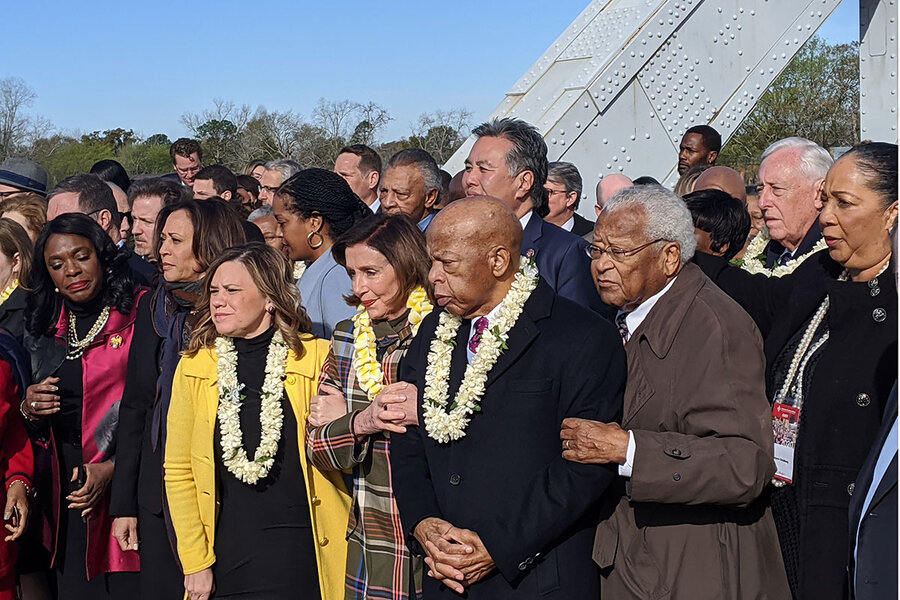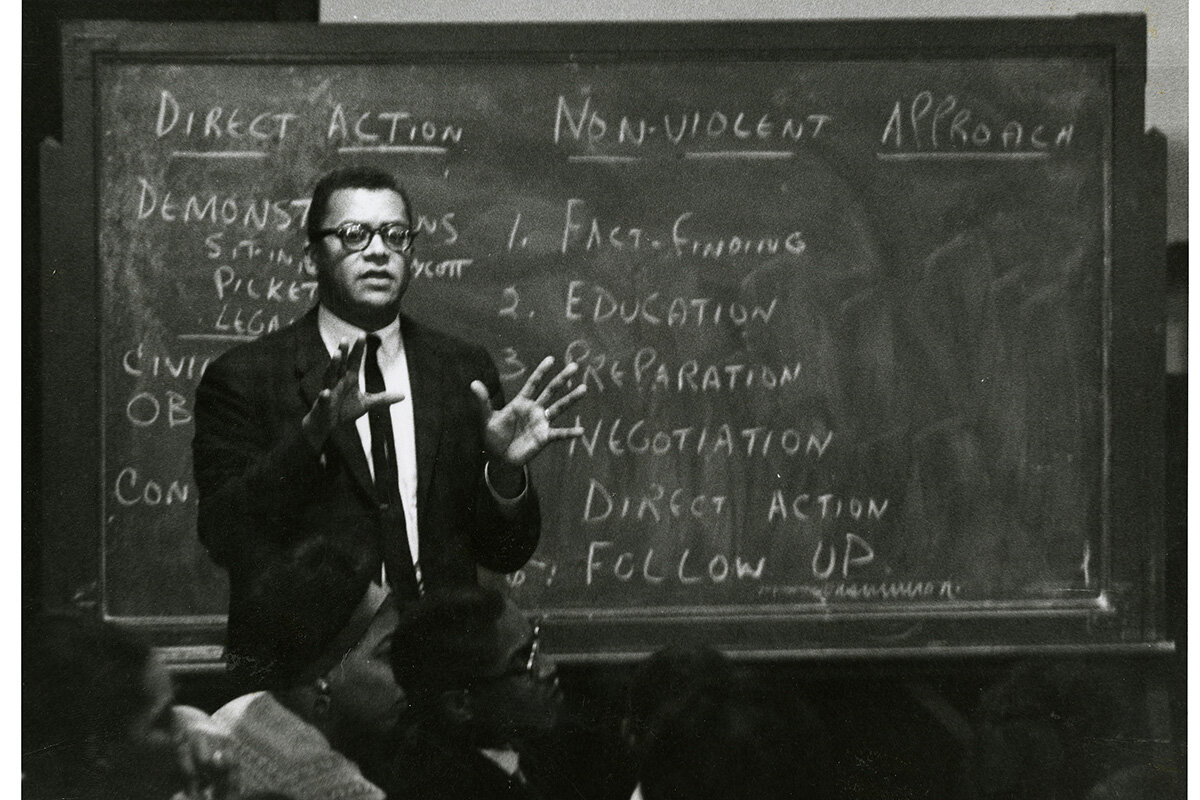Preaching the ‘quiet no’ of nonviolence
Loading...
The Rev. James M. Lawson Jr. is a Methodist minister whose theories and strategies of nonviolence were used in the civil rights struggles of the 1950s and 1960s. His new book – “Revolutionary Nonviolence: Organizing for Freedom,” a collection of his talks and dialogues – is a “how to” guide for the next generation.
In a wide-ranging conversation, edited for length and clarity, Mr. Lawson touched on the war in Ukraine; an FBI investigation of dozens of bomb threats against historically Black colleges and universities this year; last year’s Jan. 6 attack on the U.S. Capitol; and lynching, which became a federal hate crime today when President Biden signed the Emmett Till Antilynching Act into law. He told the Monitor that most changes in history aren’t wrought by violence, but by “changes of the mind [and] of the spirit.”
When you speak of “revolutionary nonviolence,” what do you mean by revolutionary?
Why We Wrote This
The Rev. James M. Lawson Jr. is one of the architects of the principles and practices of nonviolence used in the civil rights movement of the 1950s and 1960s. His new book about “revolutionary nonviolence” offers a way to think about meeting today’s challenges.
The old concepts in Western philosophy and politics that put the emphasis upon violence as the key to revolution miss a major discussion. Most of the major changes in the human journey have been changes of the mind, of the spirit, intellectual discoveries, discoveries of where we are in the universe. The biggest illustration of what I’m talking about is the Rosa Parks-Martin Luther King campaign of the civil rights movement, between 1953 and 1973. We shot at no one. We did not take up arms. We rather armed ourselves with the love of God, and the love of ourselves, and the love of others, and insisted that enmity could be defeated.
With dozens of bomb threats at HBCUs this year, how can this insidious intimidation be countered?
We had the same kind of insidious intimidation in the ’50s, ’60s, ’70s and ’80s. We also had the bombings – the overt violence, but also white mobs allowed by the police to try their intimidation of our quiet sit-ins or poster walks. What you’ve described is a steady part of the history of our country.
So, in that history, is the civil rights struggle in the U.S. at a higher or a lower stage now?
We’re at a higher stage and a more perplexing stage. Racism wasn’t talked about on public stages in the ’40s, and the ’50s, and ’60s. Lynching was talked about by the Black press, but the white press stayed away from it largely. I started reading The New York Times and The Christian Science Monitor as a high school student in the early ’40s. Neither of your papers really helped me with the issues of lynching and segregation. The Black press did that far better.
Jan. 6 is perhaps a new level of violence that we have never experienced as a nation. One cannot say that that was a legitimate demonstration because it was not peaceful. Across the nation, there ought to be a careful study of the Declaration of Independence. It is a very clear spiritual, moral, political statement about who we human beings are. At what point is that being taught, so that a public emerges in our country which will not do threats to people, threatening bombing, or doing the Jan. 6 business as [a] form of political, social, human discourse in the United States?
How do you talk to kids about nonviolence?
The Little Rock Nine is the best illustration. I asked them how their parents and the NAACP asked them to behave. And they said, “We were told not to fight back.” So I said, “What the NAACP and your parents meant is not, not to fight back, but not to fight back like the hostility you’re receiving. You’re already fighting back with your character and with your courage of going through the halls of Central High School with often persistent heckling and intimidation.”
I asked them, “What’s the worst thing that could happen to you?”
One of the girls said to me, “The bombing!” A boy would take a rock or a steel ball and wrap it in paper and hurl it at them.
So I asked, “Is it possible you could stand still, and hold your breath, and then pick up the bomb off the floor, and carry it back to the person who you knew threw it?”
And that’s precisely what a couple of the girls did in their resistance.
What did that resistance achieve?
One boy was obstinately unbearable with his language. Carlotta Walls told me that [his] “bomb” hit the wall on the side of the room and fell, and she says she was trembling. And she did take a breath. She picked it up and carried it back to that boy’s desk. She said he turned all kind of complexions and could not speak. But the next morning, when she walked into that class, that boy said, with a big smile, “Good morning, Carlotta.”
There are a lot of stories like that. You can discern that there is a way of acting that does help personal and social transformation, and that’s what I call nonviolence or soul force.
In the book you urge “resisting the venom in our society with a quiet ‘no.’” What about Ukraine?
I have no doubt that in that scenery of Ukraine, all kinds of people are being more faithful to the power of their lives than to the violence. Most ordinary people in the world do not support the power struggles that hurt and maim other people. That is generally work of the kings, and principalities, the power brokers who have not yet recognized the alternative ways to use power.







